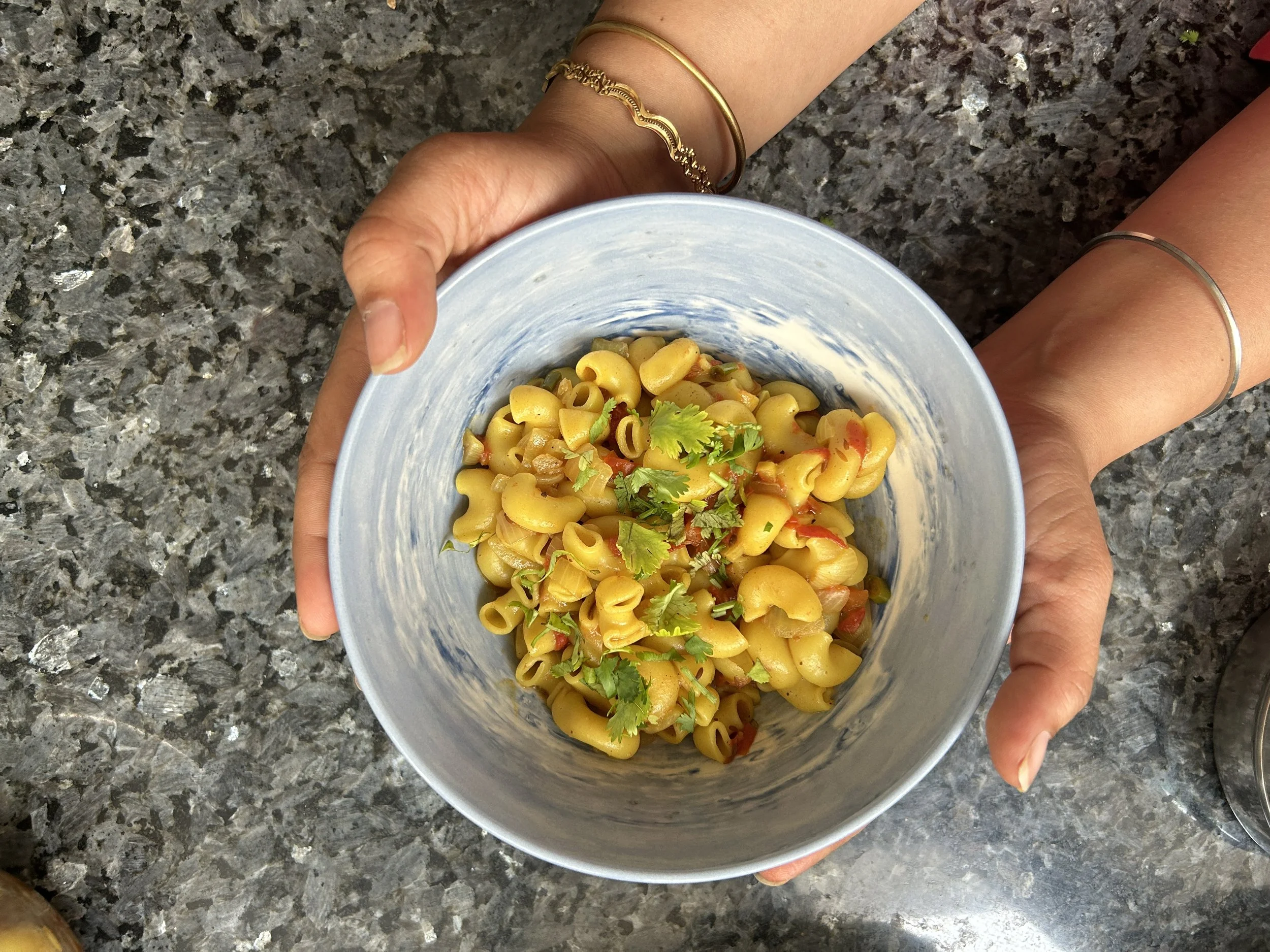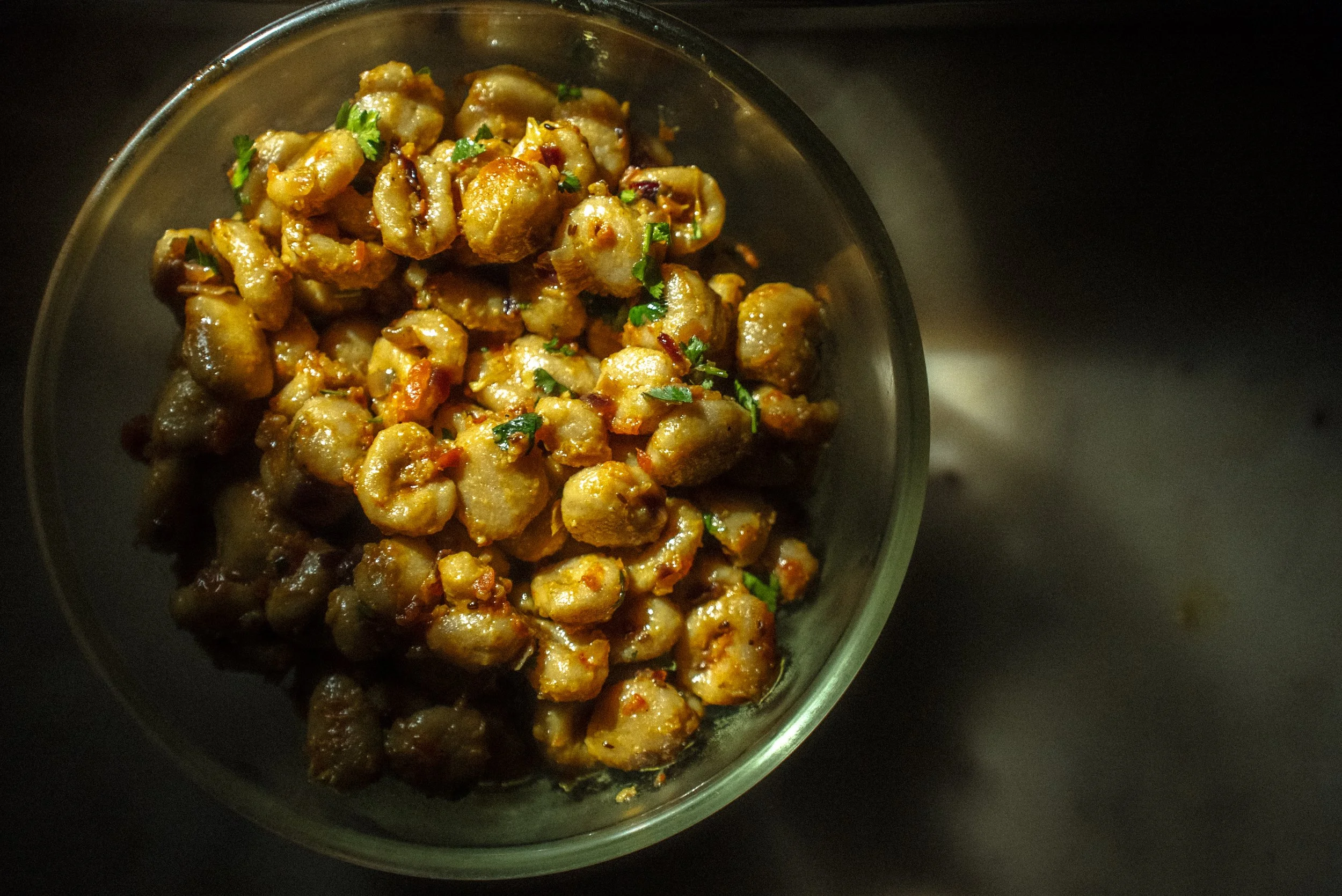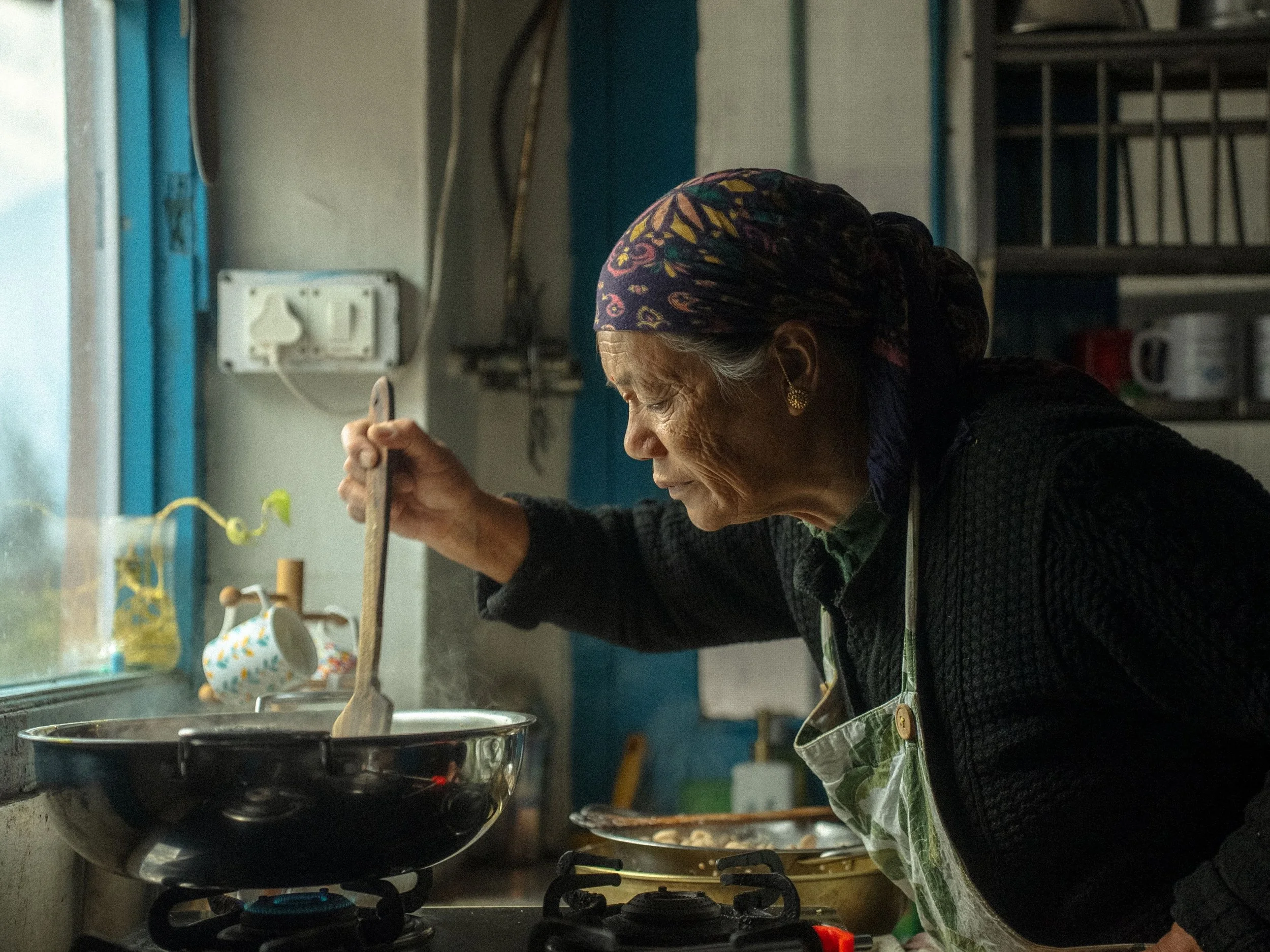Why Is Bihar’s Litti-Chokha Still Invisible in India’s Food Story?

For years, litti chokha has been quietly sitting on the sidelines of India’s culinary spotlight. It is a beloved local staple, but doesn’t find much favour internationally. This humble dish from Bihar and eastern Uttar Pradesh is more than just a rural staple, finds Amrat Singh.
If you’re in Bihar, Uttar Pradesh, West Bengal, or nearby states, you won’t have to search too hard to find litti chokha. Just look for establishments with lights bright enough to illuminate the street, little hole-in-the-wall shops, wobbly carts, or a pavement not being used for walking, and you will find it.
A plate of litti-chokha is simple. Litti is a ball of dough, kneaded with salt, ajwain, and some fat, filled with crumbly sattu (roasted Bengal gram flour). The sattu is combined with garlic, green chilies, coriander, salt, and a dash of pickle oil. Some will put enough garlic to repel a vampire. Chokha is a mash of roasted eggplants, boiled potatoes, coriander leaves, green chilies, onions, and most importantly, uncooked, raw, pungent, eye-watering mustard oil. Now every place might not offer you a green chutney, because litti chokha doesn't really need a third wheel.
Interesting to note is that besan and sattu are both made from Bengal gram, which is soaked and dried in the sun. For besan, you grind the dried Bengal gram. For sattu, you roast the Bengal gram in a wok filled with sand, and grind the legume along with the husk. This roasting process is what makes sattu a ready-to-eat meal.
It is easy to find litti chokha in Bihar, Uttar Pradesh, West Bengal, and nearby states.
In shops that can afford it, you’ll get your litti dipped in ghee — not a quick dip, but a deep immersion. Litti sinking in ghee like it’s found its final resting place.
Now your mouth is watering, and you are wondering, ‘Why isn’t this dish on the regular menu of my typical restaurant that has 12 varieties of dosa, lentils, paneer, Chinese, and some brownies too?’
To understand that, we have to go back in history.
Across Changing Empires
Chef Ranveer Brar says it aptly in his podcast, “History has been kind to Bihar. We have not.”
Back when Bihar didn’t exist and it was only the vast expanse of the Magadha kingdom, it was home to the sprawling Maurya empire, and baati was a go-to meal for soldiers and the masses. It was simple — a roasted ball of dough, eaten dipped in lentils. The addition of sattu, then called satwa, made the meal even simpler. Now, instead of cooking the dal separately, one could simply stuff sattu into the baati.
It was a complete meal, rich and nutritious; enough to sustain a hard day's labor. It was typically cooked over cow dung chips.
With a change of empires and kingdoms, the eating of litti also evolved. As the royal Mughals arrived, so did their shorbas. Litti made for an excellent starch to soaking up the shorba. When the British came, litti sat beside their curries and soups. Through the centuries, it endured.
Litti played its most crucial role in 1857. Manisha Priya writes, “Rebels virtually survived on litti during the Mutiny of 1857, rejecting British rule. The story goes that Rani Lakshmi Bai made it the food of choice, to complement the strategies that kept them under the cover of jungles and ravines.”
From Tantia Tope to Jhalkaribai, litti swapped many hands. One can easily picture the rebel soldiers jumping over ravines, running through jungles, as balls of litti jostled about their makeshift sacks.
Litti was an obvious choice there, too. Cow dung chips were easily accessible; it required much less water than baati; it kept well for nearly 48 hours; and most important, sattu was a power-packed source of nutrients.
Just as sattu is tied to litti, so is politics to sattu.
In her piece for Whetstone, journalist Shirin Mehrotra writes, “From the very beginning, sattu was seen as a peasant food; the meal of farmers in Bihar, and often, their sole sustenance through a day’s labor. During the devastating famine of the 19th century, sattu became a lifeline for the starving and malnourished.” When Lalu Prasad Yadav became the chief minister of Bihar in 1990, he asserted his position as the leader of the working class by asking to replace the baskets of dry fruits at his official residence, with sattu.
The Dish of Bihar
Although well-known in a few states, it is safe to call litti-chokha the dish of Bihar.
To understand this further, looking at Bihar's economic condition and people is imperative. In the Sustainable Development Goals India Index report from 2020-21, an index that evaluates states and ranks them on several parameters, Bihar remains at the bottom of the list, while Kerala tops. Health, education, gender, economic growth, institutions, climate change — Bihar’s standing on all these fronts is abysmal. So it should come as no surprise that one will find multiple dishes from South India at any restaurant across India, but struggle to find litti-chokha or a sattu drink on most menus.
Owing to razor-thin development and work opportunities, Bihar contributes some of the highest numbers of migrant labourers. Our biggest cities are built on the backs of migrant laborers who consume sattu as a nutritious all-in-one beverage that stands in for a meal.
It is very likely that most Indians have not tried litti-chokha because they see it as a dish of lower status. (Think about Krishnendu Ray’s hierarchy of taste.) But it is worth remembering that litti-chokha is also the favourite dish of numerous police officers, with Bihar being home to many high-ranking officials, diplomats, and celebrities.
Litti-chokha has its advocates. Manoj Tiwari, a lively singer, actor, and a problematic politician, made a song, ‘International Litti-Chokha’. He writes, "ऐकरा मे बा सतुआ चना के, लहसुन fमच नामकीआ बा जीरा जनाइन म रच मीलल बा भरल स्वाद ऐ मे पकीआ बा; fलट्fट खाई देह बनाई, स्वाद बड्री मजेदार बा, देशी fघयु के देशी खुश्बु बाटे ऐह मे यार", which loosely translates to, “In it is sattu, garlic, and green chili; cumin seeds, pepper come together to fill it with flavour. Eating litti builds your body, fills you with joy, and the taste is oh-so-brilliant. The fragrance of desi ghee is rampant, my friend.”
In a recent episode of Shark Tank India 4, an entrepreneur from Bihar claims to easily beating the sales of Wow Momo! with his brand, a cloud kitchen called Gaon, that sells litti-chokha. In Bihar and neighbouring states, trips and detours are made around litti-chokha shops. In my hometown in Bengal, a shop that sells just litti-chokha has made so much money off of it that the owner now employs over ten boys who are just roasting littis, grinding chutneys, and mashing chokha all day long.
Internationally, while other Indian dishes have found spotlight and attention, litti chokha has struggled for a seat at the table, much like migrant labourers do in the general compartment of Indian trains. But litti chokha can convince anyone of its value on a single bite. The first taste could alarm you, but then the garlic bursts through your teeth; the sattu gets denser in the mouth; a scooping of the chokha adds necessary moisture to the litti; and, well, the mustard isn’t bad at all, is it?
This recipe for litti chokha comes from my late neighbour, Archana Devi.
ARCHANA DEVI’S RECIPE FOR LITTI CHOKHA
Ingredients
For the dough
1 ½ cup whole wheat flour
⅓ cup broken wheat, fine powder
Salt to taste
Water
1 tbsp oil
For the sattu
½ cup sattu
1 medium onion, chopped
2-3 green chilli, chopped
1 inch ginger, chopped
2-3 garlic cloves, chopped
2 tbsp coriander leaves, chopped
Salt to taste
1 tbsp mustard oil
1 tbsp pickle masala
For the chokha
1 eggplant, roasted
2-4 garlic cloves
4 medium tomatoes, roasted
2 medium potatos, roasted
½ inch ginger, chopped
2-3 garlic cloves, chopped
2 green chilli, chopped
1 tbsp coriander leaves, chopped
Salt to taste
1 ½ tbsp mustard oil
Ghee
Method
In a paraat, add whole wheat flour, broken wheat, salt to taste, oil and water, knead a smooth soft dough.
In a separate paraat, add sattu, onion, green chilli, ginger, garlic, green chilli, salt to taste, mustard oil and pickle masala. Mix well. Now, make small or medium sized balls from the dough.
Sprinkling some flour, roll each dough ball to a circle of about 5 to 6 inches.
Place a big spoonful of the stuffing in the center.
Pleat and then join the edges. Press the joined part and lightly roll the stuffed dough balls in your palms, so as to get a round shape.
Once the cow dung cake is semi hot, place the prepared litti in them and let them roast until cooked through and through. You can also use the oven or coals to cook your littis.
Remove on a cloth and dust of the cow dung cake dust off it.
Then soaked the warm littis in ghee for five minutes and take them out.
For the chokha:
Take the eggplant, add 2- 3 slits and place a clove of garlic in each one.
Now place the eggplant, tomatoes, potatoes on burning hot cow dung cakes and roast them until soft and cooked properly.
Remove and let it cool down a little then peel the veggies and chop them roughly.
Add them in a bowl and add chopped coriander leaves, ginger, garlic, green chilli, salt to taste, mustard oil and mix everything properly with hand or masher.
Serve the hot littis with the chokha and some sliced raw onions.
Amrat Singh is a freelance writer and curator, whose work can be best described through a Venn diagram of films, food and culture.
ALSO ON GOYA














